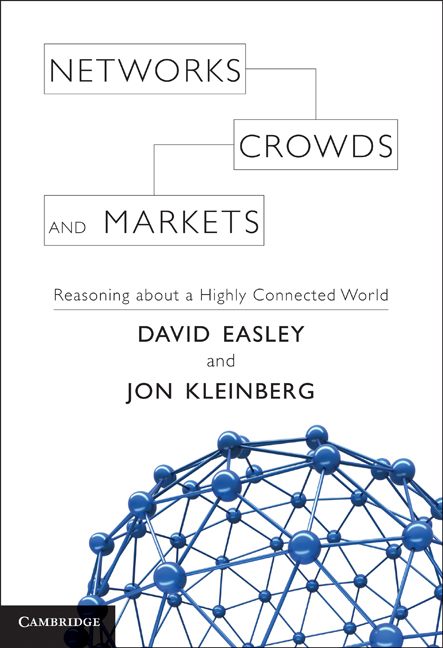#public_life: Digitale Intimität, die Privatsphäre und das Netz (2011) [German]
Filed under book | Tags: · democracy, internet, intimacy, networks, privacy, public sphere, web, web 2.0

Immer mehr Menschen äußern sich im Internet nicht nur zu politischen Fragen, sondern auch zu ihrem Konsumverhalten oder ihren sexuellen Vorlieben, sie zeigen das Innere und Äußere ihrer Wohnung, lassen uns an den kleinen und großen Dingen ihres Lebens teilhaben. Gleichzeitig wird es durch die entsprechende Software immer leichter, Nutzerprofile zu erstellen, die den Menschen durchsichtig machen und marktförmig. So oder so: Die Grenzen zwischen dem Privaten und dem Öffentlichen verschwimmen, die Sphären durchdringen einander. Bleiben bei diesem Prozess die Persönlichkeitsrechte und das Politische auf der Strecke?
Die Beiträge im vorliegenden Sammelband #public_life untersuchen vor dem Hintergrund der digitalen Drift die Bedeutung von Privatheit und Öffentlichkeit heute. Die Gegensätzlichkeit der Positionen, die an Privatsphäre und Kontrollanspruch festhalten oder das Zeitalter von Post-Privacy ausrufen, scheuen sie dabei nicht.
Mit Beiträgen u. a. von Clive Thompson, Danah Boyd, Helen Nissenbaum, Daniel J. Solove, Malte Spitz, M. Ryan Calo, Francesca Schmidt, Jan Schallaböck und Michael Seemann.
Editor: Simon Edwin Dittrich
Publisher: Heinrich-Böll-Stiftung, Berlin, April 2011
Schriften zu Bildung und Kultur series, Nr. 8
ISBN 978-3-86928-052-3
128 pages
Licensed under Creative Commons License BY-NC-ND 3.0 DE
Yochai Benkler: A Free Irresponsible Press: Wikileaks and the Battle Over the Soul of the Networked Fourth Estate (draft, 2011)
Filed under paper | Tags: · internet, journalism, mass media, network culture, networks, politics, wikileaks
A study of the events surrounding the Wikileaks document releases in 2010 provides a rich set of insights about the weaknesses and sources of resilience of the emerging networked fourth estate. It marks the emergence of a new model of watchdog function, one that is neither purely networked nor purely traditional, but is rather a mutualistic interaction between the two. It identifies the peculiar risks to, and sources of resilience of, the networked fourth estate in a multidimensional system of expression and restraint, and suggests the need to resolve a major potential vulnerability—the extralegal cooperation between the government and private infrastructure companies to restrict speech without being bound by the constraints of legality. Finally, it offers a richly detailed event study of the complexity of the emerging networked fourth estate, and the interaction, both constructive and destructive, between the surviving elements of the traditional model and the emerging elements of the new. It teaches us that the traditional, managerial-professional sources of responsibility in a free press function imperfectly under present market conditions, while the distributed models of mutual criticism and universal skeptical reading, so typical of the Net, are far from powerless to deliver effective criticism and self-correction where necessary. The future likely is, as the Guardian described its own experience with Wikileaks, “a new model of co-operation,” between surviving elements of the traditional, mass-mediated fourth estate, and its emerging networked models. The transition to this new model will likely be anything but smooth.
Working Paper of article forthcoming in the Harvard Civil Rights – Civil Liberties Law Review.
8 February 2011 version.
66 pages
PDF
Update: PDF (current version)
David Easley, Jon Kleinberg: Networks, Crowds, and Markets: Reasoning About a Highly Connected World (2010)
Filed under book | Tags: · game theory, graph theory, intellectual property, mathematics, networks, web 2.0

Are all film stars linked to Kevin Bacon? Why do the stock markets rise and fall sharply on the strength of a vague rumour? How does gossip spread so quickly? Are we all related through six degrees of separation? There is a growing awareness of the complex networks that pervade modern society. We see them in the rapid growth of the Internet, the ease of global communication, the swift spread of news and information, and in the way epidemics and financial crises develop with startling speed and intensity. This introductory book on the new science of networks takes an interdisciplinary approach, using economics, sociology, computing, information science and applied mathematics to address fundamental questions about the links that connect us, and the ways that our decisions can have consequences for others.
Publisher Cambridge University Press, 2010
ISBN 0521195330, 9780521195331
736 pages

